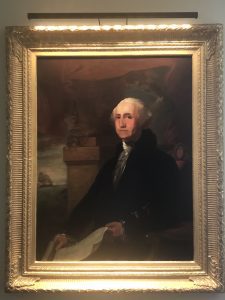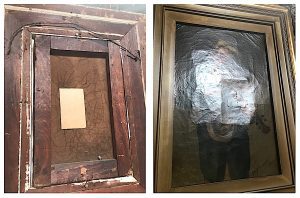Forethought about protecting murals from graffiti is an essential
part of the planning for art in a public place.
First of all, you need to understand the “why” before you can
discuss the types of protective varnish to use form anti-graffiti protection.
Murals are part of a community’s heritage, part of the architecture,
part of a community’s vibe and culture. They
are not just a decoration. In the professional mural conservation field,
when asked how long should art last, we think in terms of “generations.”
Professionals mural conservators (restorers) are bound by Ethics and
Standards of Practice. These standards would theoretically imply:
1.
We do no harm to the original artwork... the
materials we use should not cause harm to the original mural as they age or if
they have to be removed
2.
This means, also, that anything we do to the
mural should be reversible or safely removable in the future... even distant
future.
Here’s the problem to be
solved: Murals painted in acrylic paint remain very soluble-dissolvable
(Keim and oil to a lesser degree but still...) forever. So, cleaning with
anything except water is a problem. Of course, none of the stuff sprayed,
spilled or deposited on murals is cleanable-removable in water. Solvents and
citrus based strippers used to remove graffiti also attack-remove the original
paint.
In other words, ANYTHING that is used to varnish the mural, will
become part of the mural because it cannot be removed safely (for the artwork).
So, let that idea percolate for a
moment... if the varnish yellows, that will be the look of the mural in the
future and there will be no way possible to remove the yellow. If the varnish
cracks and peels (obviously unevenly) then you can’t remove it to redo it
later.
This photo
shows a hazy brown varnish layer over the artwork.
Despite this warning or inevitable negative situation, some entities
have chosen a chemically unstable hard resin “permanent”
protective varnish over a chemically stable sacrificial
layering of removable or “thinnable” varnish. I think their choice is based on
ignorance based on the opinions of non-conservation-preservation services
within their bureaucratic channels, not because there has been a logical choice
specifically for the benefit of artwork/murals.
The two schools of thought
for the choice of protective layer or varnish are:
1. The City
of Los Angeles has adopted a policy, with the excuse of future minimal
maintenance, to use a “permanent” hard coating. The name is “GCP 1000”
Polyurethane Topcoat. Here is the link for
application instructions. I suppose that because this is a commercial product,
that this appeals to bureaucrats. I’ve also been told that some graffiti can be removed
from this protective layer with a commercial cleaner called Goo Gone (another
long term preservation problem).
The Office of Cultural Affairs chose this
material at the recommendation of their graffiti abatement contractor. The
photo below shows a brown varnish under the graffiti. This was a permanent hard
coating applied over a sacrificial varnish, that was not yellowed or brown.
2. A “sacrificial” varnish layer is one that
is applied so thickly that when tagged, the graffiti can be removed along with
a layer of varnish without having to remove all the varnish. This means that
the cleaning-removal solutions don’t come into contact with the original paint.
After the graffiti removal, the surface needs to be re-protected or in other
words, the sacrificial varnish layers need to be reapplied.
The resin used for the sacrificial layers is
not a commercially available product, but can be purchased from conservation
suppliers. The resin used is Rohm and Haas’ Paraloid B72. We usually spray apply 4 heavy coats of 15%
solids (in xylene solvent). Then we follow up with 4-5 coats of 30%
applied with rollers as thickly as can be possible applied without creating
drips. On the mural in the video below, the artist originally thought to apply
the thicker sacrificial layer only up on the wall about 8’. But yielded to
reason when I showed him the nefarious techniques some vandals use to spray way
up high on walls. So, we applied all the layers over the entire mural.
This photo shows the before and after of
removing a decade of graffiti off of a thick protective sacrificial varnish.
Here is a quick video of applying the
sacrificial varnish layer to a new mural at street level in Northridge (Los
Angeles), CA and a short testimonial for our collaboration.
If you found this article interesting, please leave a constructive
comment and give this webpage a “thumbs up.” Thanks!
Contact info for participants on this
project
Roger Dolan, Lead Artist 818 902 1218 roger@muralenvironments.com
Don Larson, Northridge Beautification Foundation 818 401 5522 don@northridgebeautification.foundation
Scott Sterling, General Contractor 818 321 8644 scott@sterlingconstruction.us





